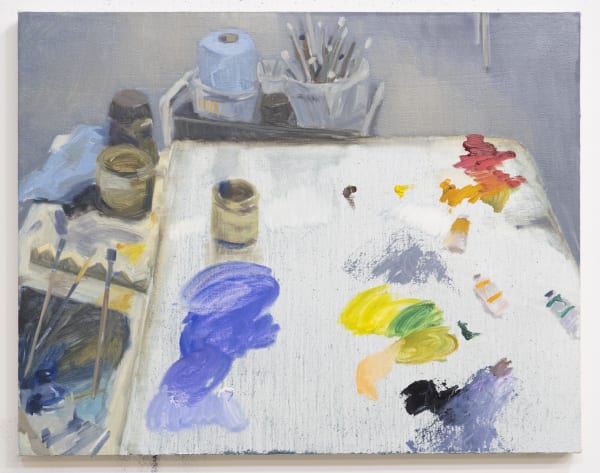-
Titled after Virginia Woolf's book Moments of Being, the exhibition is a collection of Yuri Yuan's recent works. Her personal memory and space collapse into the occurrence of global pandemic. While the book converges on Woolf's philosophy about the extraordinary sensation one experiences in the state of non-being that occupies one's mundane life, Yuan shares a similar sentiment. The artist oscillates between hyper-awareness of her own presence and the void of not existing in this world. On canvas or panels, these paintings are channels for her to explore the longing and grief of losing a loved one. This sentiment of loss and sorrow allows Yuan to examine not only the fragility of life but also the collective emotion that paintings can elicit.
-
Time and Again is based on the artist's memory of burning her father's clothes after he passed away in China. Following cultural customs, her mother and relatives burnt ancestor money and her father's belongings as a way of "sending" these items to him. The ritual seemed strange and alien to Yuan, who was exposed to primarily Christian influence in Singapore. She was also frustrated with the people in attendance of the burning, yearning instead for a moment alone with her father. In the painting, she removed the figures of her mother and relatives to recreate that lost moment of connection. She stands alone aside from the fire and watches the snowflakes fall and the fire flakes rise into the night sky. The painting ultimately reflects an ineffable resonance of her with the fire.
Hellscape was developed alongside Time and Again. Yuan created these works soon after losing her father and, through them, explores the different emotions associated with grief. The fire in Hellscape is a symbolistic and metaphorical one. Painted with pure cadmium red without shades of yellow and white, the fire belongs not to this world but to the inferno. In contrast, the rest of the painting features different tones of black, dark blue, and green. A tiny figure is trapped in the forest fire, but rather than appearing to plan an escape, the figure remains still, seemingly accepting the fate that awaits.
Collectively, these works exemplify how Yuan's paintings intertwine dreamscapes, memories, and embodiments of complex emotions. Yet by using the wet-on-wet technique and thin layers of paint in each of these works, she cultivates a sense of soft airiness that both encases and transcends that complexity. -











